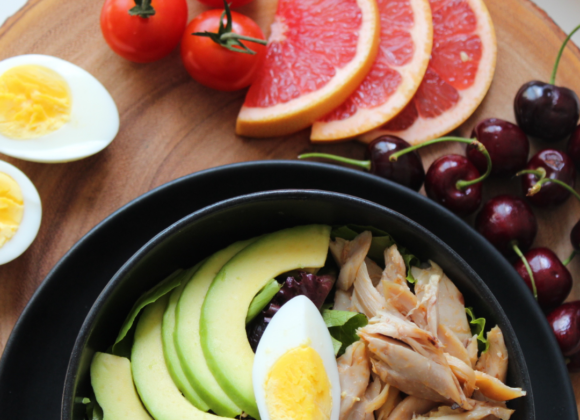
In today’s world, it’s typical to strive for a certain weight based on a chart or graph, or because you want to appear like a star.
According to Ayurveda, one’s optimal weight is determined by the unique factors that shape each person’s specific constitution, not by generic statistics (Vata, pitta, Kapha).
Every weight-loss programme should start with an honest assessment of whether or not reducing weight is both possible and beneficial to you.
Obesity is usually a Kapha-type issue, which means you have an excess of the earth and water elements. An excess of Kapha dosha can result in the development or buildup of poisons (ama), which can cause fatigue and a variety of health problems.
According to Ayurveda, if you have a chronic weight problem, you probably have a digestive problem as well. Improperly digested food can build up in the body, forming ama (toxins), which can then accumulate in weak parts of the body, resulting in sickness and disharmony. Healthy Agni, or “digestive fire,” is required for proper digestion, and many of the suggestions in this article are targeted at boosting Agni.
Ojas generated instead of ama by eating correctly and enhancing Agni. Ojas is the biochemical counterpart of happiness; it is the highest nectar that assures perfect health, it is the power that allows us to resist sickness, and it is the immune system on a subliminal level.
Evidence of ama:
A white coating on the tongue is normal, especially when first waking up in the morning. Weakness, heaviness, lethargy, poor immunity, irregular elimination, weariness, hunger, energy level, and mood swings are all signs of ama.
Evidence of Ojas:
The lightness of the body, good energy, good appetite and digestion, great immunity, regular elimination, physical strength and stamina, and an overall sense of well-being are marked as the evidence of Ojas.
Following these guidelines will not only help you lose weight, but will also improve your overall health by promoting a sense of lightness in your body, increased energy, improved appetite, superior digestion, stronger disease resistance, greater physical strength and stamina, and a sense of inner contentment.
If you want to accomplish and maintain a healthy weight reduction, you must create good eating habits. By picking meals that will balance our constitutions, we can honour our food and respect our bodies.
FOOD CHOICES

Because being overweight is mostly due to a Kapha imbalance, Kapha-reducing meals should be prioritised. Because Kapha is made up of water and earth, it has heavy, thick, and wet properties. To restore Kapha, eat foods that have the opposing properties of light and dry. The following are some unique suggestions:
- Light, dry, and warm meals are ideal.
- Vegetables should be cooked, roasted, or stir-fried in large quantities.
- Fruits that are light in colours, such as apples and pears, are the best. Also beneficial are pomegranates, cranberries, and persimmons.
- Honey is a wonderful sweetener for lowering Kapha.
- Grains: Light grains such as barley, corn, millet, buckwheat, and rye are the best.
- Spices: All spices are beneficial, except salt, which raises Kapha.
- Vegetables: Any vegetable will do. Radishes, asparagus, beets, broccoli, eggplant, green/leafy vegetables, potatoes, cabbage, carrots, cauliflower, pumpkin, lettuce, celery, sprouts are all excellent for lowering Kapha.
- Meat and fish (for non-vegetarians): The ideal flesh is white meat from chicken or turkey. Fish is also acceptable.
DIETARY RECOMMENDATIONS
- Lunch must be eaten at the same time every day.
- Make lunch your most important meal of the day.
- Eat regularly between 10 a.m. and 6 p.m., with lunch being the largest meal; do not eat after 6:00 p.m.
- Only eat until you’re 75% full. There should be no more hunger or pain from overeating once you’ve finished.
- Cold beverages should be avoided since they stifle the digestive fire (Agni).
- Always try to eat a warm meal rather than cold food.
- Food should always be adequately spiced to promote digestive power. bland food is more difficult to digest and more prone to cause the formation of ama.
- Spices have been shown to reduce Kapha, boost metabolic rate, and aid in weight loss.
SAMPLE MEAL ROUTINE
Breakfast: Breakfast can be skipped or replaced with something lighter like bread and juice or fruit.
Lunch: This is the most significant meal of the day. Food’s quality should be focused carefully here, Freshly made, healthy, nutritious, and tasty cuisine preferred, with plenty of veggies.
Dinner: When compared to lunch, eat lesser portions and lighter meals. Hot soup and bread, hot cereals, veggies and grains, or mild (non-cheesy) casseroles are all good options. At night, stay away from meats. Also, have dinner no later than 6:00 p.m.
EXERCISE

One of the most significant methods for losing weight is to exercise. Kapha dosha is a slower, steady, and obstinate dosha. Bringing movement into the body helps to enhance the digestive fire, which aids in the melting of unnecessary fat, and the burning of ama. Regular exercise that challenges but does not overload your body does this.
Light exercise over a lengthy period is considerably healthier for overweight persons. It’s a common misconception that if you’re overweight, you should exercise hard; however, intense exercise consider usually short-lived, and studies suggest that brief bursts of activity burn carbs rather than fat.

Leave a Reply